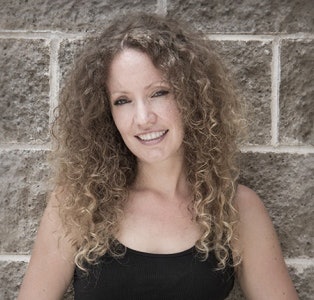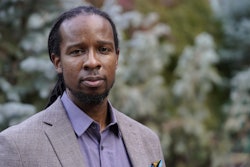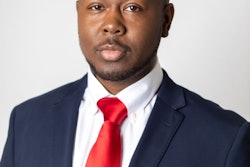White supremacy.
For many, it is a term that conjures imagery of White men in white hoods surrounded by burning crosses. It is not a term that, for most, conjures imagery of public schools, teachers and students. Instead, in a never-ending project to avoid speaking honestly about race and education, Whites liberally employ terms like diversity, inclusion, multicultural awareness, and other less urgent-sounding descriptors to discuss what, in my view, is an institutionalized White-supremacy problem.
An ongoing string of news coverage about race in education might have audiences believe that, indeed, we have a “diversity” problem in schools. From doing better to recruit teachers of color into our K-12 public schools and those of higher education; to diversifying literature curriculum at the K-12 and college levels; to being “proactive” in efforts to quell racialized and racist campus incidents with the ultimate goal of improving “race relations,” it would seem that, indeed, we have a diversity and multicultural awareness problem that can be solved by promoting inclusivity.
 Christina Berchini
Christina BerchiniSuch coverage might — insidiously — lead one to assume that these issues are fairly easily resolvable. Diversifying our teaching force, for instance, is merely a matter of recruiting and hiring more teachers of color, despite Dr. Marybeth Gasman’s finding that schools, particularly institutions of higher education, “simply don’t want them.” And perhaps it would seem that diversifying literature curriculum is as easy as choosing books and texts by and about people of color.
Unfortunately, even teachers who endeavor to choose texts aligned with the racial and cultural diversity of the children in their care are faced with teaching a prescribed, whitewashed, and Pearsonized curriculum in an effort to justify a district’s purchase of these expensive — and questionable — corporate materials. In such instances, mollifying a school district’s accountant, school board and tenuous state-sanctioned definitions of what it means to be literate is far more important than meeting the needs of students. Finally, the media address racist college students and the events for which they are responsible as though colleges have a race-relations problem, and not a problem with something deeper and more structural. Recent coverage seems to imply that such events might go away (or something) if more colleges simply require a diversity credit or two.
On one hand, that only 14 percent of Black students comprise college and university enrollment suggests that, indeed, there is a diversity “problem” that might seem to stem from inclusion and marginalization issues. But therein also exists a problem in the ways that we continue to talk about these things. Hiding behind the veil of “diversity” and “inclusion” allows us to avoid using more urgent and accurate terminology.
In other words, we do not have a “diversity” problem in education, per se. What we have is a diversity symptom of a larger problem known as White-supremacist institutions and those who invest in and benefit from them.
Let’s take the example of our media, as they are something of a low-hanging fruit. A Google search of the most recent news articles about race and racism in education do a poor job of even using “racist” and “racism” (let alone “institutionalized White supremacy”) to describe the racialized events occurring in institutions across the country. Not even our seemingly most left-leaning media can manage to call out the issues for what they are. For example, the Washington Post’s recent coverage of the brainchild who wore a gorilla mask with the goal of distributing bananas at a Black Lives Matter protest that took place at East Tennessee State University managed to skirt even the most obvious descriptors of racist and racism, let alone the institutionalized White-supremacist thinking that allows for these ideas to flourish in the first place. The article does, however, use the word “ugly,” a fairly innocuous term, to describe the incident.
Car accidents are “ugly.” Hairless cats are “ugly.” White college students who wear gorilla masks to a Black Lives Matter rally for the sole purpose of provocation are ugly, to be sure, but more accurately, more urgently, they are racist. That the individual arrived to the age of 18 believing that such behavior is a function of “free speech” and not racism is a product of institutionalized White supremacy. Curiously, this recognition and these terms are skirted, if not altogether avoided, throughout the entirety of the coverage.
For another example, a recent NPR article that illustrates preschool teachers’ assumptions about White and Black student behavior uses the lighthearted term “bias” to describe how teachers are more likely to empathize with disruptive behavior as long as the student is the same race as the teacher. Moreover, the study highlighted how teachers expect Black students to misbehave, even under the most innocuous of conditions (e.g., a preschool classroom).
I am biased toward organic vegetables, meat and dairy, as I have convinced myself that they are healthier than their conventional alternatives. The word “bias” has no place in a discussion of teachers who disproportionately focus on their Black students with the expectation that they will misbehave at any turn, and under any circumstance — such as merely participating in preschool level activities, as illustrated in the study. But the terms racist and racism do have a place, and yet these terms are curiously absent from the piece.
Teachers who anticipate that Black students will cause trouble based on nothing other than video footage of preschoolers engaging in grade-appropriate activities are racist. That teachers hold these assumptions in a system that suspends Black children nearly four times more than White children makes them products of, and contributors to, the White-supremacist institutions that allow and reward these assumptions by way of suspensions and other racially disproportionate sanctions. Furthermore, using the softball term bias (as opposed to racist) seems to suggest that choosing the right, non-biased teachers will ameliorate or eliminate racism in schools.
Even the prominent journalist Nicholas Kristof has managed to skirt more urgent terminology to describe the issues that the nation is facing head on. His most recent edition of “When Whites Just Don’t Get It” does a fine job of pointing to the systems (such as prison and education) from which Whites benefit so disproportionately. Kristof, despite failing to use more urgent language to describe these realities, illustrates that this is what White supremacy is. White supremacy refers to the ubiquitous and invisible social system that invests in, and supports White people in ways large and small, and in ways disproportionate.
For the record, I have perused all seven parts of Kristof’s “When Whites Just Don’t Get It” column. Institutionalized White supremacy remains the elephant in the room, as we talk about the police, our schools and our other social institutions. Calling them what they are — White-supremacist institutions — remains an exercise in futility.
With this piece, I would like to initiate this exercise, using the above examples:
That an 18-year-old gorilla mask-wearing White man is able to make his way to college believing that his behavior is supported by free speech speaks strongly, to me, about the conversations and experiences to which he was not exposed during his first 13 years of compulsory schooling. I am loath to believe that he kept his “views” silent for all of that time. His perspective was thus supported by systems and people in authority who did little or nothing to challenge his White supremacist beliefs.
Principals and schools who fail to consider and intervene in the ways by which Black children are suspended at nearly four times the rate of Whites are upholding the White supremacist structures that benefit White children while punishing Black children. This, in case it bears pointing out, is how the school-to-prison pipeline was breathed into being and maintains itself.
Even a Google search of the term White supremacy yields an unproductive definition: the belief that White people are superior to those of all other races, especially the Black race, and should therefore dominate society. This definition gives quite a few of us an out, does it not?
I, for one, do not believe that White people are superior to any group in particular. Therefore, I can exit the discussion, right? In other words, this definition allows for, and perhaps even encourages, a lack of responsibility for the ways by which all people — Whites included — are implicated in racism and institutionalized White supremacy. This term, as popularly defined, focuses on individual racists to the exclusion of systemic characteristics and institutionalized practices.
In sum, employing the term White supremacy as it provides the foundation for our institutions offers more possibilities for understanding the reasons for why we have “diversity” and “inclusion” and “awareness” problems in education. But we have to begin using accurate terminology in order to communicate the urgency of these issues. In short, we do not have a diversity problem. What we have is a diversity symptom. Institutionalized White supremacy is the problem.
Christina Berchini is a faculty member at the University of Wisconsin-Eau Claire, where she primarily teaches English education as an assistant professor of curriculum, instruction, and teacher education. She has articles published in the International Journal of Qualitative Studies and the Journal of Adolescent & Adult Literacy and several other scholarly venues.


















